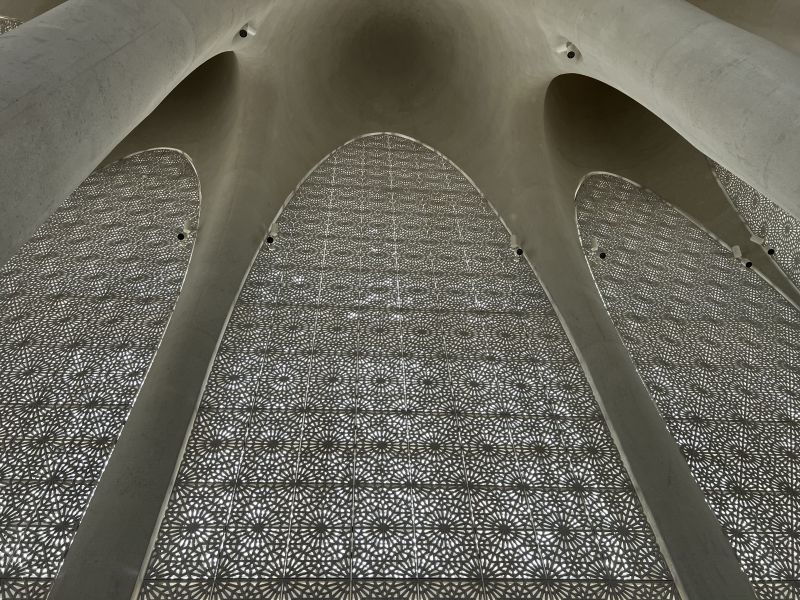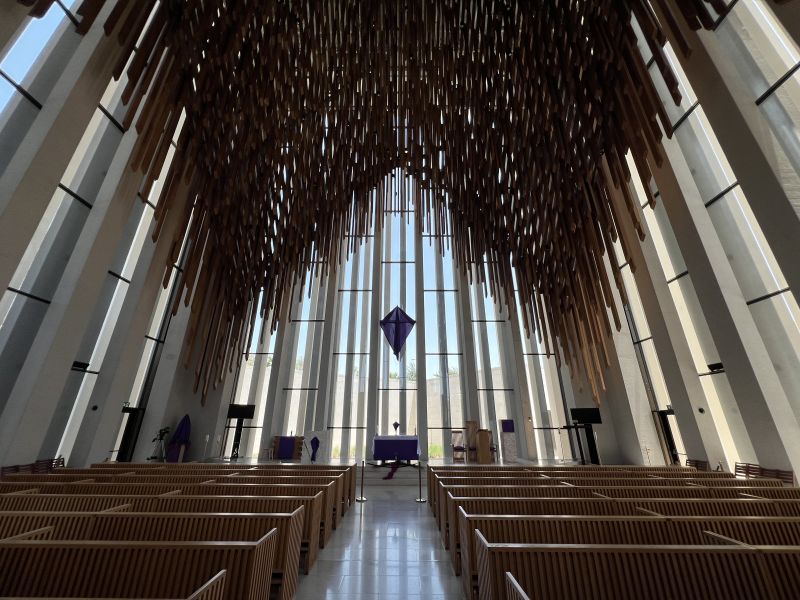
In 2023, the Abrahamic Family House opened its doors in Abu Dhabi—a groundbreaking complex that encompasses a mosque, a church, and a synagogue in one harmonious setting. This visionary project, blending spiritual aspiration with cultural diplomacy, allows each faith to celebrate its unique identity through luminous, symbolic architecture.
In 2023, the Abrahamic Family House was created in the heart of Abu Dhabi. An architectural and spiritual work of art designed to bring Muslims, Christians and Jews together around their shared values.
Located on Saadiyat Island, the site features three Houses of Worship—Eminence Ahmed Al-Tayeb Mosque, St. Francis Church, and the Moses Ben Maimon Synagogue—all standing side by side, equal in stature and meaning. Conceived by British architect Sir David Adjaye and commissioned by the United Arab Emirates, the project embodies a modern vision: the possibility of fraternity in a fragmented world.
While each building maintains its distinct spiritual and architectural identity, they engage in a quiet, respectful dialogue with one another through the interplay of shapes, materials, and especially light—used here as a spiritual language in its own right.
The Imam Al-Tayeb Mosque, built from pristine white stone, exudes a sense of serene clarity. Natural light filters in through subtle openings, casting a soft glow across the prayer hall. The mihrab, modest and yet elegantly designed, gently draws attention toward Mecca. The mosque’s minimalist interior evokes a deep, contemplative atmosphere, defined by stillness and purity.

The Imam Al-Tayeb Mosque – © This is Beirut
Adjacent to it, the St. Francis Church embraces light with dramatic intensity. Its ceiling, a striking lattice of dark wooden crosses, forms an open star through which sunlight pours into the space in shifting beams. These rays dance across the white walls, casting ever-changing shadows—silent prayers etched in light. A suspended golden cross at the heart of the nave captures and reflects the light, forming a spiritual focal point. The interplay of shadow and light becomes a wordless parable of Franciscan faith.

The St. Francis Church – © This is Beirut
The Moses Ben Maimon Synagogue also plays delicately with light. Clad in pale stone and natural wood, it forgoes grandeur for quiet reflection. Light enters through geometric skylights, reminiscent of stylized stars, casting abstract patterns on the floor and walls. The Aron Hakodesh, housing the Torah scrolls, stands out in serene simplicity within this warm, understated space. Here, light embraces without overwhelming—nurturing both study and contemplation.

The Moses Ben Maimon Synagogue – © This is Beirut
This architectural philosophy—where each tradition speaks through its own dialogue with light and shadow—is central to Sir Adjaye’s vision. No building overshadows another; each asserts its presence while engaging in a respectful dialogue with the others. Together, they form a choreography of faith and light, physically embodying the idea of spiritual equality.
At the heart of the site lies an open forum, a neutral sunlit space designed to host interfaith dialogues, public debates, and cultural events. It reinforces the project’s mission: fostering mutual understanding without erasing the distinct identity of each faith.
The Abrahamic Family House is a tangible extension of the 2019 Document on Human Fraternity, signed by Pope Francis and Grand Imam Ahmed el-Tayeb. With this initiative, the UAE has translated its commitment to peaceful coexistence into stone and light—sending a bold message of unity from a region often marked by division.
This initiative also reflects a shifting geopolitical landscape. The normalization of diplomatic relations between Israel and several Arab nations has ushered in new possibilities—ones the UAE seeks to accompany with ambitious religious and cultural efforts.
The project has received widespread praise from global religious authorities. The Vatican described it as a “historic step” for Muslim-Christian dialogue, and many Jewish organizations have hailed the synagogue’s presence as an unprecedented gesture in the Arabian Peninsula.
Naturally, skepticism persists. Critics worry about religious relativism or point to lingering restrictions on religious freedom in the region. Yet, beyond these concerns, the Abrahamic Family House offers a powerful message: difference need not divide us. It can be honored, respected—and even celebrated.
Through its inspired architecture, masterful use of light, and quietly powerful spiritual intent, the complex stands as a fragile yet vital utopia—one in which diversity of beliefs does not hinder, but rather enrich, our shared human journey. The three buildings rise side by side in unison, each bearing the legacy of its faith, all bathed in the same unifying light.


Comments